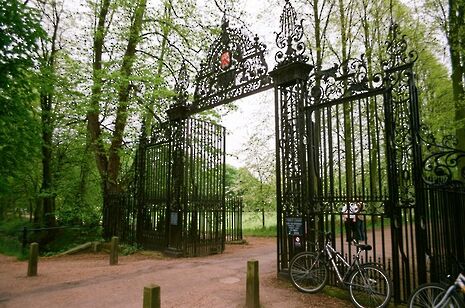Trinity may be the richest, but which college provides best value for students?
The cost of University life varies hugely from college to college making the cost of living in Cambridge extremely difficult to predict.

“It doesn’t matter which college you go to” is one of the standard lines wheeled out by admissions tutors across Cambridge during open day season. However, everybody knows that it’s not that straightforward, whether you choose your college based on academic excellence, sporting achievements, or proximity to town – everybody agrees that where you go does matter. However, one important difference between colleges is often overlooked: the difference it will make to you financially.
This week we compiled a table of all the undergraduate colleges’ accommodation charges for their cheapest and more expensive rooms, the results of which you can see below. Even on first glance, however, the figures raise some interesting points. At Robinson for example, where the most expensive rooms in Cambridge are to be found, a top-tier college room costs a staggering £1,650 a term (for 10 weeks). Meanwhile just over the river at Trinity Hall you can get a room for under £600 a term.
The disparity in prices is especially worrying given that Robinson takes a higher than average number of students from the Winter Pool, meaning that many students don’t the option to go for a cheaper college, having been assigned to the college automatically in the reshuffle of applicants. However, even for students who do attend their first choice college it’s not always even possible to check the price of accommodation before applying. In many cases, accommodation prices aren’t available online and in order to get hold of accurate figures we had to contact JCR reps and colleges themselves, something prospective students are unlikely to spend hours doing.
The issue is further complicated by the fact that most college operate over a range of accommodation prices. The range of choices offered by colleges therefore also becomes an issue: whilst Robinson does have some very expensive rooms there are also many cheaper ones allowing the college to cater to a range of budgets. At Newnham, on the other hand, students are charged a flat rate of around £1,300 a term regardless of which room they are allocated, meaning that for students struggling financially there is no way of opting for cheaper accommodation if needed.
The accommodation charges compiled by Varsity showed that generally speaking the richer the college was the cheaper it could afford to make its student accommodation, with the modern colleges therefore being forced to charge more for rooms in order to support the college. However the trend was not uniform however with some colleges with smaller financial endowments such as Selwyn having fairly cheap accommodation whilst affluent St John’s has some of the more expensive rooms found in Cambridge.
The Kitchen Fixed Charge is another Cambridge peculiarity that undergraduates are often unaware of when they first arrive. Some colleges, such as Robinson and Emmanuel, either do not have one or are currently in the process of phasing it out. Meanwhile other colleges, such as Newnham and Downing, charge over £200 a term in order to subsidise the cost of food for undergraduates. Other colleges like Clare, Magdalene and Queens’ also charge extra for heating and electricity on top of their normal accommodation charges. The result of all these combined charges is that it is incredibly difficult to estimate the true cost of living for a student at any particular college and also means that student living costs across the University can be up to 50% more at some colleges than others.
In the data Varsity collected one price was consistently similar across colleges: a standard meal in the buttery, canteen or non-formal hall, with all colleges charging between £3 and £4 for a meal. However, when looking at formal prices the results varied widely. At Magdalene a formal costs slightly more than £5, whereas at King’s it will set you back £24 unsubsidised (students are allowed 4 subsidised formals a year at £16).
While the quality of food varies hugely across the University, nowhere is it quite as unpopular (or as bad) as at Gonville and Caius. Most colleges, with the exception of Caius and Peterhouse, allow students to use a pay-as-you-go system for meals. However these two make attendance compulsory: students pay for a certain number of meals in hall every term, which are non-reimbursable if they are unable to attend (Fitzwilliam also has a minimum pay-as-you-go spend). While Peterhouse tends to get away with this, in the eyes of most of their students, by providing food of a reasonable quality, most Caius undergraduates surveyed told Varsity that the standard of food at their college was awful – and in the majority of cases listed it as their least favourite thing about the college.
The cost of University life varies hugely depending on where students choose, or are assigned, to study, making the cost of living extremely difficult to predict. In this age of £9,000 tuition fees future applicants would therefore be well advised to factor in the varying costs at different colleges when choosing where to apply.
 News / SU reluctantly registers controversial women’s soc18 December 2025
News / SU reluctantly registers controversial women’s soc18 December 2025 News / CUP announces funding scheme for under-represented academics19 December 2025
News / CUP announces funding scheme for under-represented academics19 December 2025 Features / Should I stay or should I go? Cambridge students and alumni reflect on how their memories stay with them15 December 2025
Features / Should I stay or should I go? Cambridge students and alumni reflect on how their memories stay with them15 December 2025 Fashion / The art of the formal outfit 18 December 2025
Fashion / The art of the formal outfit 18 December 2025 News / Dons warn PM about Vet School closure16 December 2025
News / Dons warn PM about Vet School closure16 December 2025










